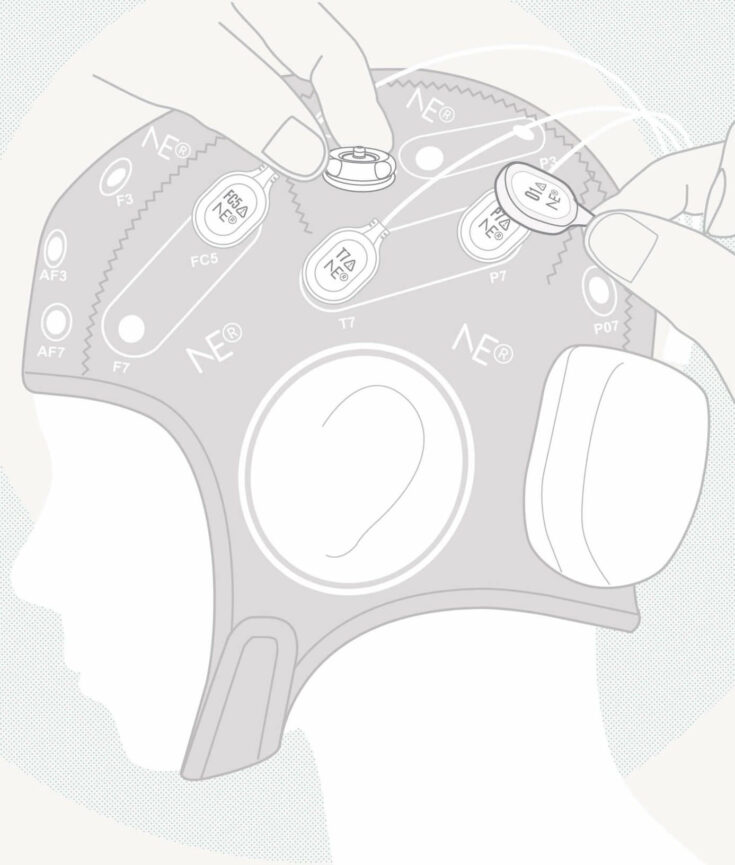We all feel happy when something nice happens in our life, we cry when we lose someone we love, we feel fear when we perceive that our life is in danger. But where do all these processes come from? What happens inside us when we feel this way or another? Emotion is one of the most controversial topics in psychology, a source of inspiration, intense discussion and controversy among intellectuals and artists across the centuries. Many researchers believe that emotions are part of human evolution and contribute to personal and general awareness as they facilitate social communication. All modern theorists agree that emotions influence what people perceive, learn and remember, and that they play an important role in personality development and communication.
Emotions are powerful enough to affect and determine social relationships and interactions, memory and creativity, and to influence the mechanisms of rational thinking and decision making. A. Damasio [1] describes how a patient who had normal intelligence score but lacked certain emotions acted irrationally and was unable to make proper decisions. He beautifully argues that without emotions humans would need a huge amount of time to compute the gain of every response option and act according to the one that gives the highest gain for a certain situation. Thus, emotions do not impair rationality as people used to believe, but they help, instead, to have interactions and to make decisions in an intelligent way.
Emotion analysis is a challenging topic in various research fields such as psychology and neuroscience. Many researchers across the world aim at understanding basic human functions, such as the brain-body function and how this function is related to emotional processes. In medicine, such research outcomes may provide an indicator of certain disorders. In this case, a pathological condition may reveal differences in affective patterns, which could help to identify the pathological condition in an early enough stage to intervene.
Interestingly enough, various theories on what emotion is and where it emanates from have been proposed by various respected researchers around the world. Each of these emotion theories has its own set of assumptions about the nature of emotion, and is followed by relative experimental research. Although there is overlap among them, each one distinctly presents an account for what emotion is and for its basic mechanisms. For instance according to the social constructivists, emotions imply a cultural connotation and are seen as products of learned social rules. As social products, then, emotions can be understood through social analysis. Darwin, on the other hand, relates emotions to evolution, and argues that they exist for survival purposes [2]. In this context, certain emotions have dominated throughout time, as they have served facing survival-related issues. According to this perspective, humans experience similar emotions, as they have gone through similar survival-related issues, some of which are common with those of other closely-related species. Thus, Darwin opposes the previous theory, arguing that it is not society that has provoked emotions, but the survival instinct which happens to be common among species of similar society.
Then comes James, who agrees with Darwin, but instead of focusing on emotional expression, focuses on emotional experience. James accredits the importance of bodily changes during emotional processes. He argues that bodily responses initiate emotions, and not the other way around, since the former ones have to automatically adapt fast enough to the environmental changes. James says, “we feel sorry because we cry, angry because we strike, afraid because we tremble’’ and not the other way around [3]. The similarity with the Darwinian perspective lies on James’ claims that we experience emotions because our bodily responses automatically change and/or adapt fast enough, depending on the survival-related significance of various situations.
In neuroscience, initially emotions were thought to be related to the limbic system of the brain, which among other brain structures includes the hypothalamus, cingulate cortex and hypocampi. The amygdala which is located near the temporal lobes has also been related to emotions, specifically to fear. The prefrontal cortex is located in the frontal part of the brain, and is related to emotional decision making. Frontal-lobe asymmetric activity is highly associated with approach and withdrawal emotional processes. One has higher right frontal activity (compared to left frontal activity) when he or she wants to avoid a stimulus or situation (withdrawal) and higher left frontal activity (compared to right frontal activity) when he or she wants to engage to a stimulus or situation (approach). All these findings confirm the hypothesis that emotions influence/are influenced by bodily changes, however, causality still has not been proven. The truth is that during many years scientists have been trying to find causal relationships in various processes in nature, but lately they mainly focus on synchronizations across natural phenomena rather than their causal relationships.
To bridge the gap between bodily changes and perceived environmental changes, another group, namely cognitive theorists, argues that emotions depend on appraisals, processes by which perceived environmental changes or events are judged as good or bad. As a consequence, every emotion experienced is a result of a specific cognitive appraisal, which informs the organism about the environment, and helps to adapt the emotion in order to be ready and able to act. Thus, in the cognitive perspective, thought and emotion are inter-related. Cognitive appraisals actually describe the personal significance of an event, as opposed to the social constructivist approach.
Hacker points out the importance of discriminating processes that may look similar, so as to better approach the topic and be able to measure emotions [4]. For instance, he argues that feelings consist of perceptions, sensations, appetites and affections. Perceptions are not localized in the body but exercise cognitive functions, such as to feel the heat, cold, etc. However, sensations, such as pain, tickle or tingle, are localized in the body, but they are not felt with any part of the body. Appetites are natural, such as hunger, thirst or animal lust, and non-natural (addictions). Affections, like appetites and sensations are felt. They can be divided into emotions, agitations and moods. However, the limits among emotions, agitations and moods cannot be clearly identified, and there is much interaction among them. The difference between emotions and moods is that moods describe long-term dispositional states, compared to emotions that describe short-term affective reactions.
So, what is finally an emotion?
To my point of view, and certainly based on all above-mentioned ideas, one could say that emotion is a feeling distinct from a perception or appetite, which serves the purpose of maintaining and prolonging well-being (survival-related), but can be influenced by social rules, since the subjective interpretation of well-being is highly influenced by social rules. Emotion is related to bodily responses, since we produce tears when we are sad, we sweat when we are afraid, etc, and is a subjective feeling which can change based on re-appraising the situation that caused it.
Thus, although all the above beautiful theories initially seem controversial, they are rather complementary and highlight different aspects of emotions. Thanks to many visionary psychologists, sociologists and generally all those people who have been thirsty for knowledge and understanding on how our own mechanisms function, we now have a variety of theories and models on emotions. We can use these theories to produce interesting representations of emotions, based on signals from the brain and the periphery together with appropriate machine learning frameworks, to create artistic and medical applications that can improve our emotional well-being!
References:
[1]. A. Damasio, Descartes’ error: Emotion, Reason and the Human Brain. Putnam
New York, 1994.
[2]. C. Darwin, The expression of the emotions in man and animals. Oxford University
Press, 1998.
[3]. W. James, ‘’What is an emotion?” Mind, vol. 9, no. 34, pp. 188-205, 1884.
[4]. P. Hacker, \The conceptual framework for the investigation of emotions,” International Re-
view of Psychiatry, vol. 16, no. 3, pp. 199-208, 2004.

